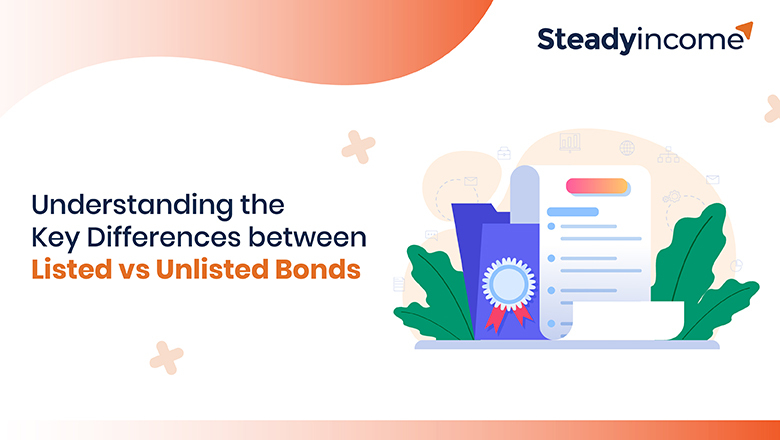Listed vs. Unlisted Bonds: Understanding the Key Differences

Introduction
Bonds are essential to many investment portfolios, balancing risk and return. When bonds investment in india, it’s crucial to understand the differences between listed and unlisted bonds. Both types offer distinct benefits and risks, depending on market accessibility, liquidity, and regulatory requirements. Understanding these key differences can help investors decide which type of bond best suits their financial goals.
Key Differences Between Listed and Unlisted Bonds
1. Trading Platform
- Listed Bonds: These are traded on recognized stock exchanges, such as the National Stock Exchange (NSE) or the Bombay Stock Exchange (BSE). Investors can buy and sell them through the exchange.
- Unlisted Bonds: These bonds are not traded on any stock exchange and are typically sold privately through over-the-counter (OTC) transactions.
2. Liquidity
- Listed Bonds: High liquidity, as they are traded on an open market. Investors can easily buy or sell them as required.
- Unlisted Bonds: Lower liquidity because they are not traded on public platforms, making it harder to find buyers or sellers.
3. Regulation and Transparency
- Listed Bonds: Heavily regulated by authorities such as SEBI (Securities and Exchange Board of India). There is a high level of transparency in pricing and trading.
- Unlisted Bonds: Less regulated, which means they may carry higher risk due to the lack of oversight and transparency in trading.
4. Price Discovery
- Listed Bonds: The prices are determined by market forces, and the current price is easily visible to investors due to regular trading on exchanges.
- Unlisted Bonds: Price discovery is more difficult since these bonds are traded privately, and there’s limited access to real-time pricing information.
5. Investment Accessibility
- Listed Bonds: Easily accessible to retail investors through brokerage accounts. They offer a straightforward way to invest in bonds.
- Unlisted Bonds: Usually accessible only to institutional or high-net-worth investors due to the private nature of their transactions and higher investment thresholds.
6. Risk and Returns
- Listed Bonds: Generally considered safer due to the regulatory oversight, liquidity, and transparency. Returns may be lower but come with reduced risk.
- Unlisted Bonds: May offer higher returns, but they carry an increased risk due to lower transparency and regulatory oversight.
7. Tax Implications
- Listed Bonds: Interest income and capital gains from listed bonds are subject to taxation, but there might be preferential tax treatment for long-term capital gains.
- Unlisted Bonds: Interest earned and capital gains are taxed similarly, but unlisted bonds may attract higher taxes or different tax treatment, especially when it comes to long-term capital gains.
Conclusion
The choice between listed and unlisted bonds depends largely on your investment goals and risk tolerance. Listed bonds provide transparency, and liquidity, and are better suited for investors seeking security and ease of access. Unlisted bonds, on the other hand, might offer higher returns but come with greater risk and lower liquidity, making them more suitable for institutional or experienced investors. Understanding the nature of each bond type will help you create a more balanced and diversified portfolio based on your risk appetite and financial objectives.


